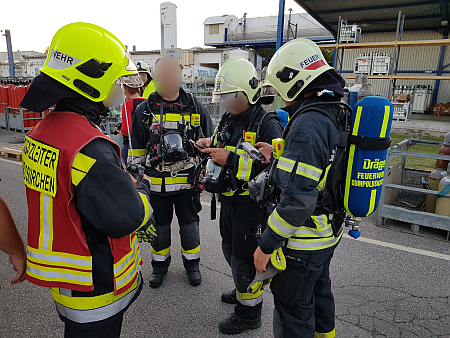The wireless standard for emergency services used by first responder organizations—TETRA (Terrestrial Trunked Radio)—provides robust and secure communication but offers limited data rates unsuited for multimedia data. Such multimedia data, however, would be beneficial in complex emergency situations. For example, in case of a large event, the police needs to keep an overview of various locations to monitor incidents (e.g., violence or mass panic). Real-time reports need to be available at the command center, preferably including pictures or video. Such situational awareness supports time-critical decision processes and ensures the safety of people visiting the event.
This context is addressed by the project 4C4 First Responder. Partners are Joanneum Research (lead), Lakeside Labs, Eurofunk Kappacher GmbH, Dräger Austria GmbH, IFR, University of Graz, the fire brigade Gumpoldskirchen, and the Federal Ministry of the Interior. Funding is obtained via the security research programme KIRAS of the Federal Ministry for Transport, Innovation, and Technology (bmvit).
Lakeside Labs is responsible for the design and development of a flexible communication solution. The goal is to improve communication between emergency response units to enable situation awareness and achieve a common operational picture. Christian Raffelsberger, researcher in this project, explains: “We develop solutions and test them in training drills with first responders. This is great because real life always throws harder challenges than can be imagined beforehand. It is crucial to involve first responders early in the design and testing process.”
 The approach is to define a communication manager that chooses the appropriate networks depending on availability, QoS requirements, and data characteristics. It acts as a middleware between application-specified data transmission requests and the available networks. For instance, some data may be too sensitive to be sent over WLAN and require transmission over the secure TETRA network instead. Another example might be the use of a responder-deployed WLAN mesh network for multimedia data instead of using the more expensive UMTS/LTE network. Several communication manager instances self-organize to provide this service in a seamless fashion.
The approach is to define a communication manager that chooses the appropriate networks depending on availability, QoS requirements, and data characteristics. It acts as a middleware between application-specified data transmission requests and the available networks. For instance, some data may be too sensitive to be sent over WLAN and require transmission over the secure TETRA network instead. Another example might be the use of a responder-deployed WLAN mesh network for multimedia data instead of using the more expensive UMTS/LTE network. Several communication manager instances self-organize to provide this service in a seamless fashion.



